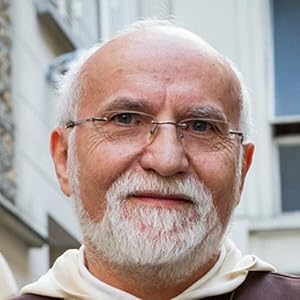Catherine de Hueck Doherty
关于作者
Catherine Kolyschkine was born into an aristocratic family in Russia in 1896, and baptized in the Russian Orthodox Church. Because of her father’s work, she grew up in Ukraine, Egypt, and Paris. Many different strands of Christianity were woven into the spiritual fabric of her family background, but it was from the liturgy of the Russian Orthodox Church, the living faith of her father and mother, and the earthy piety of the Russian people themselves that Catherine received the powerful spiritual traditions and symbols of the Christian East. At fifteen Catherine was married to Boris de Hueck. Soon they were swept into World War I, where she served as a nurse at the front. After the Revolution of 1917 they endured with all the peoples of the Russian Empire the agonies of starvation and civil war. Eventually Catherine and Boris escaped to England. At the beginning of her new life in the West, Catherine embraced the teachings of the Roman Catholic Church, without rejecting the spiritual wealth of her Orthodox heritage. In 1921 the couple sailed to Canada where, shortly after their arrival in Toronto, Catherine gave birth to their son George. As refugees, they experienced dire poverty for a few years—but soon Catherine's intelligence, energy, and gift for public speaking brought her to the attention of a large lecture bureau. Her talks were popular all across Canada and the United States. Within a few years, she became an executive with another, international lecture service. She became a North American success story. In the 1930’s, after several years of anguish, Catherine and Boris separated permanently; later the Church annulled their marriage. As devastated as Catherine was, she knew that God wanted something new from her now, but she did not know what it was. The words of Christ haunted her: “Sell all you possess, and give it to the poor, and come, follow Me.” She consulted the archbishop of Toronto about her new vocation, and he eventually blessed it. Catherine took a room in a slum section of Toronto and began to quietly love and serve her neighbours, becoming their friend, and praying, hidden in their midst. Her example of radical Gospel living became a magnet for men and women in search of a way to live their faith. Catherine had not envisaged a community, but when the Archbishop told her that, yes, Christ was calling her to this, she accepted, and soon Friendship House was born. The works of Friendship House were modest—a shelter for the homeless, meals for the hungry, recreation and books for the young, a newspaper to make known the social teachings of the Church. In 1938 Catherine initiated an interracial apostolate in Harlem, New York, living with and serving the African-Americans. This work expanded to other cities: Chicago, Washington, D.C., and Portland, Oregon. Friendship House became well known in the American Church. Catherine shared with her friend, Dorothy Day of the Catholic Worker, the intense struggle to move the Gospel out of books and into believers' lives. Even if a few friends, such as the young Thomas Merton, recognized in her the power of the Holy Spirit and an unwavering fidelity to Christ's Church, many others were frightened by her Russian bluntness. Others simply could not grasp the largeness of her vision, especially because her experience of the ways of God were so foreign to them. Finally after a painful difference of opinion over the nature of the Friendship House apostolate, Catherine found herself pushed again into the chartless waters of the Lord. This time Catherine did not have to start alone. In 1943 she had married Eddie Doherty, a celebrated American newspaperman of Irish descent, after he convinced her and her bishop that he wanted to share and support her vocation. In 1947, then, Catherine and Eddie came to Combermere, a small village northeast of Toronto, where the Bishop of Pembroke had agreed she could work among the rural families. What seemed like the end of the road turned out to be the most fruitful period of Catherine’s life. The community of Madonna House was born, and grew into an open family of lay men, lay women, and priests, living in love and breathing from the “two lungs,” East and West, of the Catholic Church. As Catherine's inner life deepened and the community matured, she shared the fullness of the inner vocation Christ had formed in her. Over the years Catherine authored dozens of books; her award-winning book Poustinia: Encountering God in Silence, Solitude and Prayer was hailed as a “modern spiritual classic” and translated into many languages. Today, the Madonna House Apostolate continues to grow. It currently has over 200 members, including more than twenty priests. It has foundations in Canada and the United States, Europe, Russia, and the West Indies, with associate priests in South America, Africa, India, and many other countries. The training center in Combermere, Ontario offers an experience of Gospel life to guests who come to participate fully in the community life. In the Madonna House way of life are the seeds of a new Civilization of Love. Catherine Doherty died on December 14, 1985—a woman who had become a spiritual giant by responding to grace. The cause for her canonization has been officially opened in the Catholic Church. More information about Catherine’s life, works, and the progress of her cause can be found at: www.catherinedoherty.org and www.madonnahouse.org
阅读完整简历















